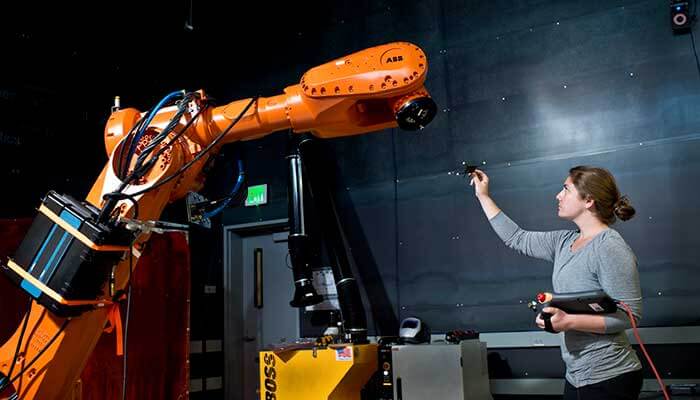
When you think of artificial intelligence (AI), chances are that a vision of supremely intelligent computers and robots taking over the world and enslaving the human race spring to mind. We’ve been conditioned by sci-fi books and movies to fear the worst.
The reality is far different – mundane even. AI is basically the operation of algorithms that automatically optimize themselves as they go – a process known as ‘machine learning’. It may sound simple, but it yields powerful results that are revolutionizing the world we live in.
There are some exciting applications of AI, not least in the field of manufacturing, with AI-assisted CNC (Computer Numerical Control) machining leading the way.
What is CNC machining?
CNC machining is a process that uses a computer linked to a machine with interchangeable tools. The computer is programmed with a design, with some machines allowing 3D CAD (Computer Aided Design) drawings to be automatically imported. The machine then carries out machining tasks such as cutting, grinding, drilling, and lathing.
Although the process is highly automated, CNC machinists are required to change the tools, set up the computer, and calibrate and monitor the operation of the machine.
How does AI improve CNC machining?
CNC machining, just like any other industrial process, has the potential to go wrong sometimes.
Reducing machine downtime
Machines develop faults, parts get worn, equipment goes out of calibration and, at times, machines develop faults for seemingly no reason at all. When these things happen, vast amounts of time can be wasted as the operator locates and diagnoses the fault.
Machine downtime in manufacturing is estimated to reduce productivity between 5–20%, depending on the industry and scale of operations. This makes it a very costly problem.
One of the main benefits of applying AI technology to CNC machines is to enable self-diagnosis. The machine will learn what normal operation is. Thus, if a fault develops, it will be detected, and the software will attempt to diagnose the problem. Through machine learning, this process will improve over time, with the machine becoming highly accurate in its fault diagnosis, potentially saving many hours of machine downtime.
Machine optimization
As well as using data collected for diagnostics, more sophisticated AI algorithms can also analyze the data and adjust machine settings to optimize the process. For instance, if the data shows that slightly reducing the pressure applied to the drill tool reduces wear and leads to a more accurate finish, the CNC machine can be directed by the AI to automatically make the required adjustments.
The way a tool travels through a workpiece is known as the ‘tool path’. This can be optimized by AI analysis of the data, which adjusts the tool path to one that generates the highest productivity level and least wear.
Quality control
The end product of CNC machining can sometimes be variable, depending on the operation taking place. AI can help to maintain consistency of the output.
Software such as Autodesk FeatureCAM uses AI to ensure the quality of the final product. The CNC machine output is continually monitored and tolerance-checked, with adjustments made automatically to maintain consistency.
The overall impact on cost and efficiency is obvious, with less wastage and higher accuracy.
Future of AI-assisted CNC machining
As the technology progresses, it’s likely that the AI will become advanced enough to be linked to the design software and amend designs automatically for improved results. Generative design is an iterative process to design that automatically optimizes designs, with software such as Autodesk Dreamcatcher linking directly into additive manufacturing (3D printing) or subtractive manufacturing (CNC machining) processes.
The future of CNC machining will almost certainly be a more linked-up one, with the whole manufacturing process linked via cloud computing, with AI optimization, diagnostics and fault correction.
Will human CNC machinists even be required in the future? Yes, at least for the foreseeable future someone needs to operate the computer, load the designs, oversee the process and rectify any faults. Therefore, the dystopian view of intelligent computers taking over the world is far-fetched, but they will certainly play a more prominent role in manufacturing over the years to come.



Add comment
Connect with: Log in
There are no comments